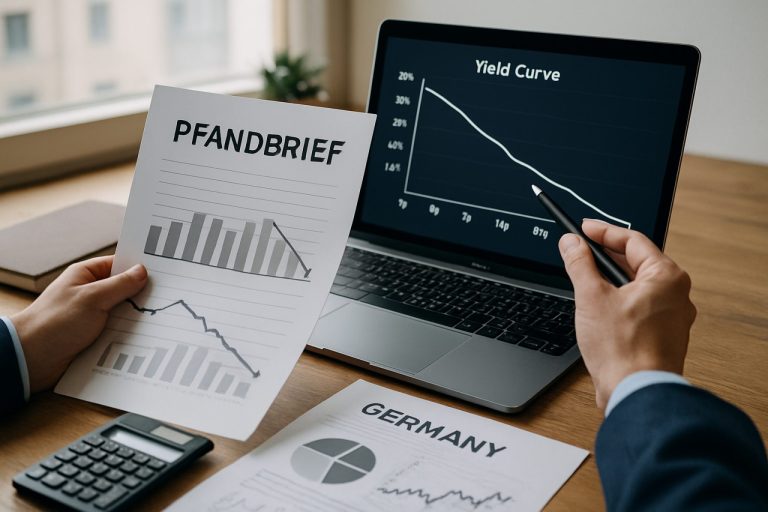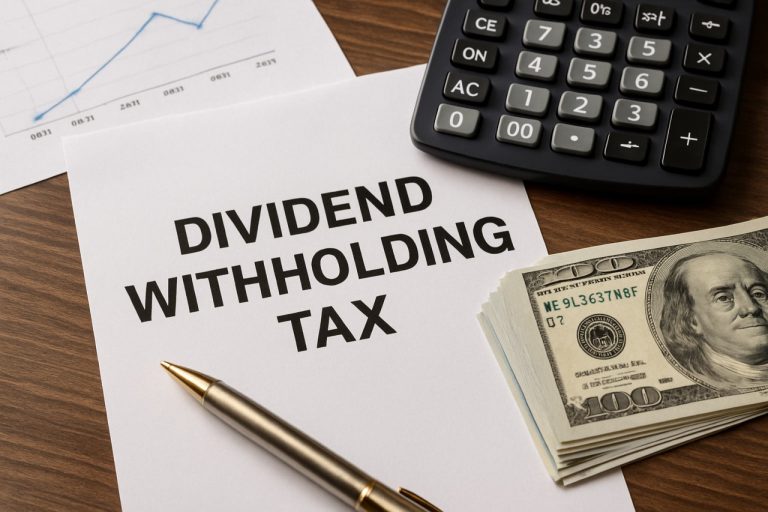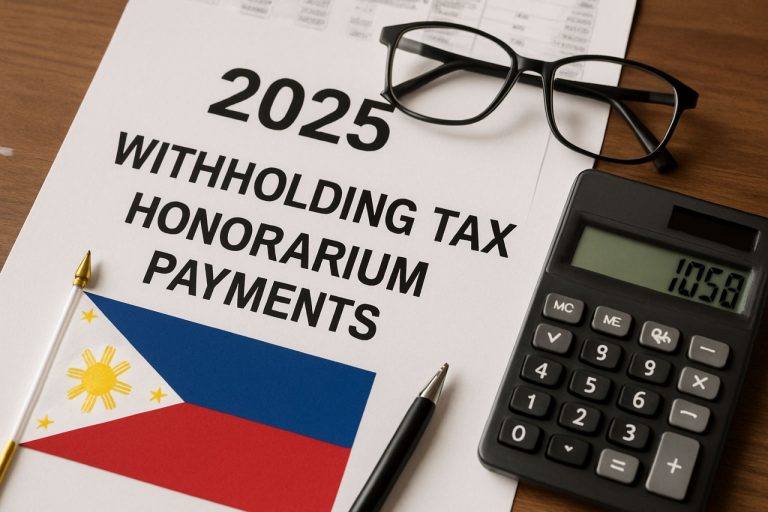
Table of Contents
- Executive Summary: Romania’s Investment Landscape in 2025
- Economic Drivers: Growth Sectors and Macroeconomic Trends
- Foreign Direct Investment: Entry Strategies and Key Incentives
- Legal Framework: Business Law, Taxation, and Investor Protections
- Compliance & Regulatory Environment: Licensing, Reporting, and Risk
- Taxation in Romania: Corporate, Personal, and Withholding Taxes
- Key Statistics: Market Data, Demographics, and Performance Indicators
- Infrastructure & Digitalization: New Projects and Opportunities
- Risks & Challenges: Market Volatility, Political, and Compliance Risks
- Future Outlook: Projections and Strategic Recommendations for 2025–2030
- Sources & References
Executive Summary: Romania’s Investment Landscape in 2025
Romania’s investment landscape in 2025 is characterized by robust economic growth, ongoing regulatory modernization, and increasing integration with European and global markets. The country’s GDP is projected to grow by 3.5%–4% in 2025, driven by strong domestic demand, EU-funded infrastructure projects, and expanding export sectors, particularly in automotive, IT, and renewable energy. Foreign direct investment (FDI) surged to nearly €11 billion in 2023, and Romania remains one of Central and Eastern Europe’s top FDI destinations (National Bank of Romania). Key drivers include a competitive corporate tax rate of 16%, skilled labor force, and strategic location within the EU single market (InvestRomania).
The legal and regulatory environment is shaped by Romania’s EU membership, ensuring alignment with European directives on corporate governance, anti-money laundering (AML), and competition policy. In 2024, new amendments to the Company Law (Law no. 31/1990) simplified company formation and digitalized several regulatory processes, reducing red tape and improving transparency (National Trade Register Office). Recent tax reforms, including the introduction of e-invoicing and enhanced VAT monitoring, seek to boost compliance and reduce the shadow economy (Ministry of Finance).
Compliance obligations for investors are increasingly focused on ESG (environmental, social, governance) standards, in line with EU sustainability regulations. The government has prioritized renewable energy, digitalization, and innovation, offering incentives for greenfield investments and R&D activities. The energy sector is undergoing liberalization, attracting significant foreign capital into wind, solar, and grid modernization projects (National Energy Regulatory Authority).
Risks in the Romanian market include bureaucratic hurdles, evolving tax policies, and occasional legislative unpredictability. However, continued judicial reforms and digital transformation of public administration are expected to enhance the investment climate in the medium term (Ministry of Justice). The outlook for 2025 and beyond is positive: Romania is poised to benefit from substantial EU recovery funds and its ongoing alignment with European standards, making it an increasingly attractive destination for both portfolio and direct investment.
Economic Drivers: Growth Sectors and Macroeconomic Trends
Romania’s economic landscape in 2025 is characterized by robust growth across key sectors, underpinned by favorable macroeconomic trends and a business-friendly investment climate. The nation’s GDP growth is expected to remain above the European Union average, with the National Institute of Statistics reporting a real GDP growth rate of 2.8% in 2024 and projections indicating continued expansion driven by both domestic consumption and external demand.
Among the main economic drivers, the IT&C sector stands out, contributing over 7% to GDP and supporting Romania’s reputation as a regional digital hub. High-value-added services, including fintech, software development, and outsourcing, continue to attract significant foreign direct investment (FDI), supported by a well-educated, multilingual workforce. The industrial sector, particularly automotive manufacturing and components, remains a pillar of the economy, with global players expanding operations and supply chains. The InvestRomania agency highlights ongoing investments from automotive, aerospace, and electronics companies, spurred by Romania’s geographic proximity to major EU markets and competitive labor costs.
Renewable energy is another strategic growth sector, aligned with Romania’s commitments under the EU Green Deal. The government is facilitating investments in wind, solar, and hydroelectric projects through incentive schemes and streamlined permitting, with the Ministry of Economy, Entrepreneurship and Tourism targeting a renewable energy share of 34% by 2030. The agri-food sector, leveraging Romania’s extensive arable land, is also attracting capital for modernization and export-oriented production, supported by EU rural development funds.
From a macroeconomic perspective, inflationary pressures are moderating, with the National Bank of Romania forecasting headline inflation to fall within the 4–5% range in 2025. Fiscal consolidation measures are being implemented to meet EU deficit targets, including improvements in tax collection and digitalization of public services. The government’s National Recovery and Resilience Plan (NRRP), supported by over €29 billion in EU funds, is accelerating investments in infrastructure, health, and digitalization, providing additional impetus to economic growth.
Looking ahead, Romania’s outlook for investors remains positive, with structural reforms, EU integration, and sectoral diversification expected to sustain momentum. Ongoing legal harmonization and improved regulatory compliance, as outlined by the National Trade Register Office, enhance transparency and ease of doing business, making Romania an increasingly attractive destination for both strategic and portfolio investors over the next few years.
Foreign Direct Investment: Entry Strategies and Key Incentives
Romania continues to present an attractive destination for Foreign Direct Investment (FDI) in 2025, underpinned by its strategic location within the European Union, competitive labor costs, and a growing domestic market. According to the National Bank of Romania, FDI inflows in 2023 exceeded €10 billion, marking a sustained post-pandemic recovery and reflecting investors’ confidence in the country’s economic and regulatory framework.
Foreign investors typically pursue three main entry strategies: establishing wholly-owned subsidiaries (greenfield investments), acquiring existing Romanian companies (brownfield investments), or forming joint ventures. The procedure for company formation is streamlined via the National Trade Register Office, where foreign shareholders face no restrictions on ownership, except in sensitive sectors such as defense, where prior approval from the Government of Romania is required.
Romania’s legal environment for FDI is governed by several key laws. The Companies Law no. 31/1990, updated through 2023, facilitates the incorporation and operation of commercial entities by foreign investors. In addition, Emergency Ordinance no. 46/2022 establishes the Competition Council as the authority overseeing the screening of foreign direct investments, especially those impacting national security or exceeding certain financial thresholds. Recent amendments align Romania’s FDI screening mechanism with the EU Regulation 2019/452, enhancing transparency and compliance with EU standards.
Tax incentives form a significant part of Romania’s FDI appeal. The standard corporate income tax rate remains at 16%, among the lowest in the EU. Investors in designated industrial parks benefit from exemptions on land and building taxes, while significant R&D activities qualify for additional deductions under the Fiscal Code, as detailed by the National Agency for Fiscal Administration. Furthermore, state aid schemes managed by the Ministry of Finance offer grants for greenfield investments exceeding €1 million, targeting job creation and regional development. These schemes are subject to annual budget allocations and competitive selection.
Looking forward, the outlook for FDI in Romania remains positive. The government’s 2024–2027 strategy emphasizes digitalization, infrastructure upgrades, and energy transition, all of which are expected to drive further investment opportunities. Compliance requirements are anticipated to tighten, particularly in line with EU sustainability and anti-money laundering directives, necessitating careful due diligence by prospective investors. Nonetheless, Romania’s improving business climate and evolving incentives are set to sustain its position as a regional FDI hub in the years ahead.
Legal Framework: Business Law, Taxation, and Investor Protections
Romania’s legal framework for business and investment is shaped by its EU membership, progressive tax reforms, and a series of pro-investment statutes. As of 2025, the principal legal structure for business operations is the Companies Law no. 31/1990, recently amended to streamline company formation and reduce minimum capital requirements. Foreign and domestic investors can establish companies with full ownership rights, and there are no restrictions on profit repatriation, aligning with EU freedom of capital movement principles (National Trade Register Office).
Taxation is governed by the Fiscal Code (Law no. 227/2015, as amended), which sets the corporate income tax at 16%. Micro-enterprises—defined by turnover thresholds—may opt for a turnover tax regime of 1% or 3% depending on employment levels. Value Added Tax (VAT) is generally 19%, with reduced rates for specific goods and services. Romania has also implemented the EU Anti-Tax Avoidance Directive and is compliant with OECD BEPS standards, underscoring a commitment to international transparency and anti-abuse rules (Ministry of Finance).
Investor protections are enshrined both in domestic law and international agreements. Romania is a signatory to over 80 bilateral investment treaties and the ICSID Convention, enabling foreign investors to access international arbitration. The Law on Foreign Investments (OUG 92/1997) guarantees equal treatment for foreign and local investors, and the Competition Council enforces anti-monopoly and fair competition standards (Romanian Competition Council).
Compliance obligations require companies to maintain statutory accounting records, submit annual financial statements, and adhere to anti-money laundering rules (Law no. 129/2019). The National Office for Prevention and Control of Money Laundering oversees implementation of these standards (National Office for Prevention and Control of Money Laundering).
Key statistics reflect an increasingly investor-friendly climate: Romania attracted over €10 billion in foreign direct investment in 2023, with a continued upward trend forecasted into 2025 (National Bank of Romania). The outlook remains positive, driven by ongoing digitalization of public services, EU funding for infrastructure, and legislative efforts to reduce bureaucracy. However, investors should monitor evolving tax policies and new EU regulatory alignment, particularly in ESG, digital, and cross-border taxation domains.
Compliance & Regulatory Environment: Licensing, Reporting, and Risk
Romania’s compliance and regulatory environment continues to evolve as it aligns with European Union standards and seeks to attract foreign investment. The core legal framework governing investment activity is established by the Romanian Companies Law (Law No. 31/1990) and the Foreign Direct Investment (FDI) screening regime, which has been strengthened in recent years in line with EU Regulation 2019/452. Investors must pay close attention to licensing requirements, financial reporting obligations, and risk mitigation strategies.
All companies seeking to operate in Romania must register with the National Trade Register Office, which ensures compliance with corporate governance standards and transparency. Certain sectors—such as banking, insurance, energy, and telecommunications—require additional sector-specific licenses, typically overseen by authorities like the National Bank of Romania (for financial institutions) and the National Energy Regulatory Authority (for energy undertakings).
Since December 2022, new FDI screening rules have been in force under Emergency Ordinance 46/2022, obliging non-EU investors to obtain prior approval from the Romanian Government for investments in strategic sectors. The FDI review process is managed by the Commission for the Examination of Foreign Direct Investments, and covers a broad range of industries including energy, transport, critical infrastructure, and media. Non-compliance can result in significant fines and even the unwinding of transactions.
Romanian companies are required to submit annual financial statements prepared in accordance with International Financial Reporting Standards (IFRS) or local Generally Accepted Accounting Principles (GAAP), as stipulated by the Ministry of Finance. Tax compliance is enforced by the National Agency for Fiscal Administration, with ongoing efforts to digitalize reporting and enhance tax collection. In 2025, Romania is expected to further implement the EU’s Anti-Money Laundering Directive, increasing obligations around know-your-customer (KYC) procedures and beneficial ownership disclosure.
Risk factors for investors include regulatory unpredictability, ongoing legislative changes, and corruption risks. However, Romania has taken significant steps to strengthen judicial independence and transparency, as recognized by the European Commission’s 2023 Rule of Law Report. The outlook for the coming years indicates continued modernization of regulatory processes and enhanced compliance standards, particularly in sectors prioritized for digitalization and green transition investments.
Overall, while Romania’s compliance landscape poses some complexity, the trend is toward greater clarity and alignment with EU best practices, aiming to foster a stable and attractive environment for both domestic and foreign investors.
Taxation in Romania: Corporate, Personal, and Withholding Taxes
Romania’s tax regime is a key consideration for investors, offering a blend of competitive rates and evolving compliance requirements. As of 2025, the corporate income tax (CIT) rate remains at 16%, positioning Romania among the more attractive jurisdictions in the European Union for corporate taxation. Certain sectors, such as nightclubs and gambling, are subject to alternative minimum taxes. Small businesses with revenues up to EUR 500,000 may opt for microenterprise tax rates—recent legislative changes now apply a 1% rate if at least one employee is present; otherwise, the rate is 3%. However, the scope for microenterprise status has been narrowed, and restrictions based on activity type and ownership have become more stringent in recent years (National Agency for Fiscal Administration).
Dividends distributed by Romanian companies to other Romanian companies are generally subject to a 8% withholding tax, unless an exemption applies under the domestic implementation of the EU Parent-Subsidiary Directive. For non-resident shareholders, the 8% dividend withholding tax is standard, but reductions may be available under double tax treaties. Withholding tax on interest and royalties paid to non-residents is 16%, with reductions available under treaties or the EU Interest and Royalties Directive, provided conditions are met (National Agency for Fiscal Administration).
Personal income tax in Romania is levied at a flat rate of 10% on most types of income, including salaries, independent activities, and rental income. Social security contributions are mandatory for both employers and employees. In 2025, the employer’s social security contribution is generally 2.25%, while the employee’s contributions are 25% (pension) and 10% (health), calculated on gross salary. Special provisions apply for certain sectors (e.g., construction, agriculture), offering temporary exemptions or reductions. Non-residents are subject to tax on Romanian-sourced income only (Ministry of Finance).
Romania’s tax compliance environment is modernizing, with digital reporting requirements expanding. The SAF-T (Standard Audit File for Tax) system became mandatory for large taxpayers and is being phased in for others, aiming to increase transparency and reduce fraud. The government has announced additional e-invoicing and real-time reporting initiatives set for full implementation by 2025 (Ministry of Finance).
The outlook through 2025 and beyond is for continued alignment with EU directives and further digitalization. However, frequent legislative changes require vigilance from investors. Authorities are stepping up enforcement and audit activity, especially in high-risk sectors. Investors are advised to monitor official guidance closely and ensure ongoing compliance with evolving tax rules.
Key Statistics: Market Data, Demographics, and Performance Indicators
Romania continues to attract investor interest in 2025, reflecting its robust economic fundamentals and favorable demographic profile. According to the National Institute of Statistics, Romania’s GDP expanded by 3.2% in 2024, with forecasts anticipating similar growth through 2025–2026. The country’s population stands at approximately 19 million, with a median age of 42 years, supporting a dynamic labor market that remains competitive within the European Union.
Foreign Direct Investment (FDI) inflows reached €11.2 billion in 2023, marking a 17% increase compared to the previous year, as reported by the National Bank of Romania. The services sector, manufacturing, and IT&C industries remain leading destinations for FDI, with Bucharest-Ilfov region accounting for over 60% of total investment. Small and medium-sized enterprises (SMEs) dominate the business landscape, comprising over 99% of registered companies, according to the National Trade Register Office.
Romania’s main stock exchange, the Bucharest Stock Exchange (BVB), reported a market capitalization of €63.7 billion at the end of Q1 2025. The BVB was upgraded to Emerging Market status by FTSE Russell in 2020, which continues to support capital inflows and improve liquidity. The BET index, the BVB’s blue-chip benchmark, yielded a 12.6% annual return in 2024, outpacing several regional peers.
Inflation declined to 5.7% in March 2025, following monetary tightening by the National Bank of Romania, which set the policy rate at 7%. Unemployment remains low, holding at 5.4% in early 2025 (National Institute of Statistics), while average net monthly earnings increased to approximately RON 4,800 (€970).
- Population: ~19 million (National Institute of Statistics)
- GDP Growth Forecast (2025): 3.2% (National Institute of Statistics)
- FDI Inflows (2023): €11.2 billion (National Bank of Romania)
- Unemployment Rate (Q1 2025): 5.4% (National Institute of Statistics)
- Stock Market Capitalization (Q1 2025): €63.7 billion (Bucharest Stock Exchange)
Looking ahead, Romania’s EU membership, improving infrastructure, and ongoing digitalization initiatives position the country as a compelling destination for investors seeking growth, stability, and access to both domestic and regional markets.
Infrastructure & Digitalization: New Projects and Opportunities
Romania’s infrastructure and digitalization landscape is undergoing significant transformation, driven by domestic reform and substantial inflows from the European Union (EU). The National Recovery and Resilience Plan (PNRR), approved by the European Commission, allocates approximately €29.2 billion for Romania between 2021 and 2026, with a strong emphasis on transport, energy, and digital infrastructure (European Commission). For investors, this translates into robust opportunities in both greenfield and brownfield projects, as well as public-private partnerships.
Under the PNRR, major infrastructure projects are being accelerated. In transport, plans include the construction and modernization of over 400 kilometers of highways and express roads by 2026, with a focus on cross-border connectivity and decarbonization of the sector (Ministry of Transport and Infrastructure). Rail and urban transit upgrades are also prioritized, with substantial funding allocated to electrification, rolling stock renewal, and station modernization.
Digitalization is a parallel priority, with over €1.8 billion dedicated to e-government, cybersecurity, and digital skill development. The government is targeting full digital interoperability of public services, expansion of broadband infrastructure to rural and underserved areas, and the establishment of a national cloud platform for public administration. The Ministry of European Investments and Projects is overseeing these digital initiatives, setting strict milestones for 2025 and beyond.
On the legislative front, Romania has streamlined public procurement through the updated Law no. 98/2016 and subsequent amendments, aiming to improve transparency, reduce litigation, and facilitate EU-compliant tendering (National Agency for Public Procurement). New public-private partnership guidelines and sector-specific compliance regulations are being rolled out, particularly in transport and IT sectors, in line with EU directives.
Key statistics highlight the momentum: Romania’s gross fixed capital formation in infrastructure reached 5.1% of GDP in 2023, up from 4.3% in 2020 (National Institute of Statistics). Broadband coverage surpassed 90% at the national level, with 5G deployment progressing rapidly in urban centers (National Authority for Management and Regulation in Communications).
Outlook for 2025 and beyond is positive. EU funding, legislative reforms, and an expanding digital economy are expected to drive further investment. Compliance with evolving EU standards remains crucial, and investors should monitor new procurement and cybersecurity regulations. Overall, Romania’s infrastructure and digitalization agenda presents a compelling environment for both domestic and foreign investors seeking medium- and long-term growth.
Risks & Challenges: Market Volatility, Political, and Compliance Risks
Investing in Romania presents a dynamic landscape marked by both opportunities and significant risks. As the country integrates further into European economic structures, investors must navigate market volatility, political uncertainties, and evolving compliance requirements.
- Market Volatility: Romania’s economy is closely intertwined with the European Union. In recent years, growth has remained robust, with GDP expansion projected at 3.8% for 2025, according to the National Bank of Romania. However, inflationary pressures, currency fluctuations, and exposure to regional shocks—especially given Romania’s proximity to the ongoing conflict in Ukraine—continue to pose risks. The Romanian Leu has experienced periods of volatility, affecting returns for foreign investors and complicating financial planning, as noted by the National Bank of Romania.
- Political Risks: Although Romania remains stable within the EU framework, governance challenges persist. Investors must be mindful of shifting government priorities, changes in fiscal policies, and the risk of regulatory reversals. The adoption of new legislation or amendments, such as changes to the Fiscal Code or labor laws, can impact investment climate unpredictably. For instance, tax reforms introduced in 2023 and under discussion for further adjustment in 2025 have created uncertainty regarding corporate tax rates and incentive schemes, as documented by the Ministry of Finance.
- Compliance Risks: Romania has continued to align its anti-money laundering (AML) and corporate governance standards with EU directives, increasing compliance obligations for investors. The implementation of Directive (EU) 2018/843, through Law 129/2019, tightened requirements around beneficial ownership disclosure and customer due diligence. The National Office for Prevention and Control of Money Laundering closely monitors compliance, and penalties for non-compliance have increased. Furthermore, foreign investors must ensure adherence to rules on data protection under the General Data Protection Regulation (GDPR), enforced by the National Supervisory Authority for Personal Data Processing.
- Legal and Judicial Risks: Uncertainties can arise from the pace and consistency of judicial processes. While Romania has made strides in improving judicial efficiency, contract enforcement and dispute resolution may still be hampered by delays or inconsistent rulings, as highlighted by the Ministry of Justice.
Overall, while Romania remains an attractive destination for investment within Central and Eastern Europe, the outlook for 2025 and beyond will require heightened due diligence and a robust risk mitigation strategy for investors to navigate evolving market, political, and compliance landscapes.
Future Outlook: Projections and Strategic Recommendations for 2025–2030
Romania is positioned as an increasingly attractive destination for foreign and domestic investors in the 2025–2030 period, driven by robust macroeconomic fundamentals, strategic location, and continued integration with European markets. The country’s GDP growth is projected to remain above the EU average, with the National Bank of Romania anticipating sustained economic expansion fueled by industrial output, digitalization, and infrastructure investment. The government’s commitment to EU fiscal compliance and reform programs further underpins investor confidence.
The legal framework for investment in Romania aligns with EU standards and offers a stable environment for capital inflows. The Ministry of Justice and InvestRomania highlight simplified procedures for company registration, streamlined licensing, and transparent public procurement systems. Notably, amendments to Law no. 129/2019 on anti-money laundering and beneficial ownership disclosure, effective since 2023, have strengthened compliance expectations for both domestic and foreign investors.
Romania’s ongoing improvements in compliance and governance are evidenced by enhanced digital public services and the implementation of the EU’s Whistleblower Protection Directive (Law no. 361/2022). The National Supervisory Authority for Personal Data Processing enforces GDPR regulations, ensuring high standards for data privacy and security across sectors.
- Key Statistics: In 2024, Romania attracted over €11 billion in foreign direct investment (FDI), according to the National Bank of Romania. The unemployment rate is projected to stabilize at 5–6% through 2025, while inflation is expected to moderate within the central bank’s target range.
- Sectoral Outlook: The Ministry of Investments and European Projects prioritizes green energy, digital transformation, and transport infrastructure, supported by over €29 billion in EU Recovery and Resilience Facility funds allocated through 2026.
- Strategic Recommendations: Investors are advised to monitor legislative changes related to taxation, labor law, and ESG compliance. Engaging local legal counsel and leveraging incentives for R&D, renewable energy, and industrial modernization can optimize returns. Additionally, Romania’s accession to the Schengen Area, expected in the coming years, will further streamline cross-border business operations.
Looking ahead, a combination of EU-aligned regulation, digitalization, and targeted incentives is likely to sustain Romania’s investment appeal from 2025 to 2030. Vigilance regarding regulatory developments and proactive compliance will be essential for maximizing opportunities in this dynamic market.



